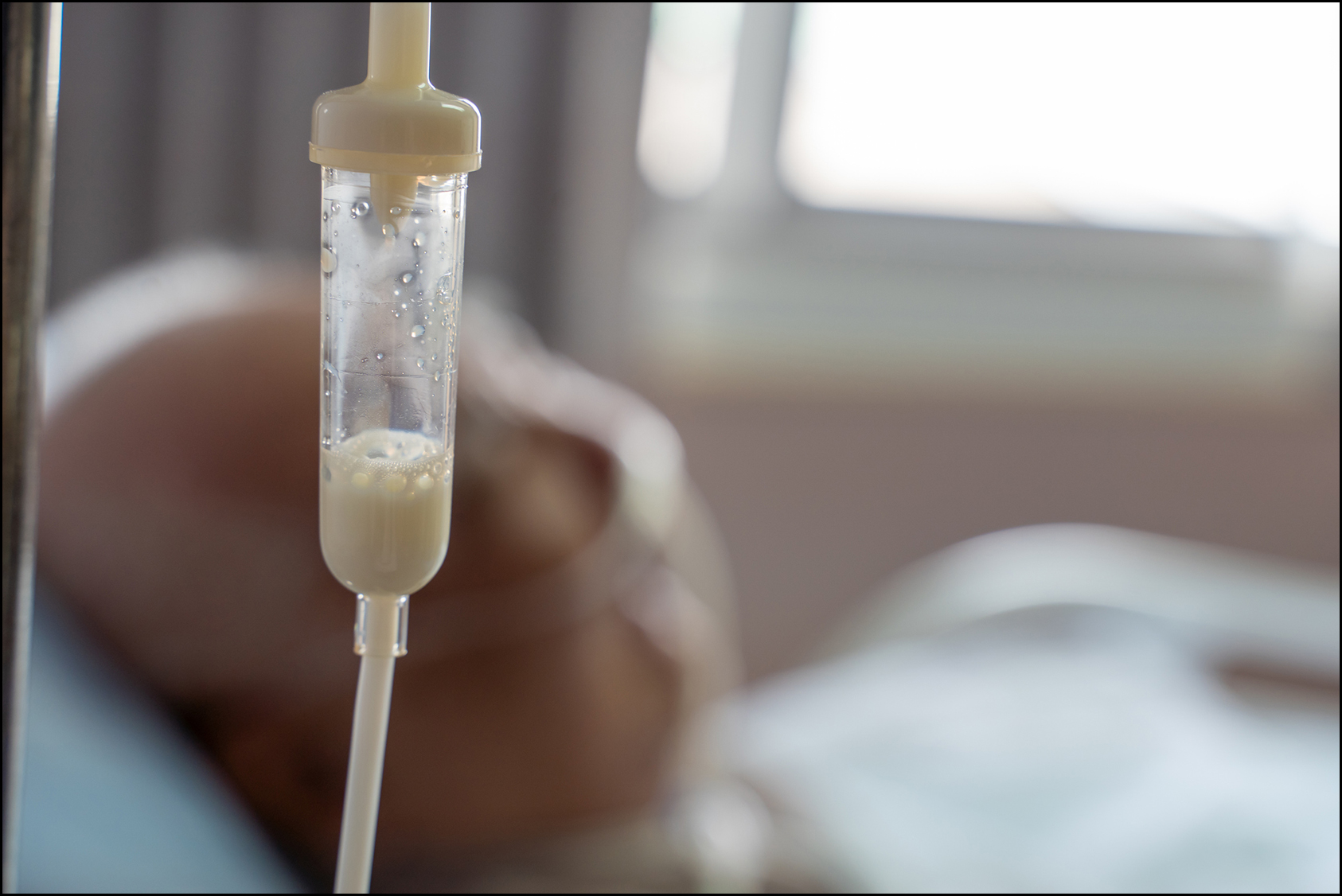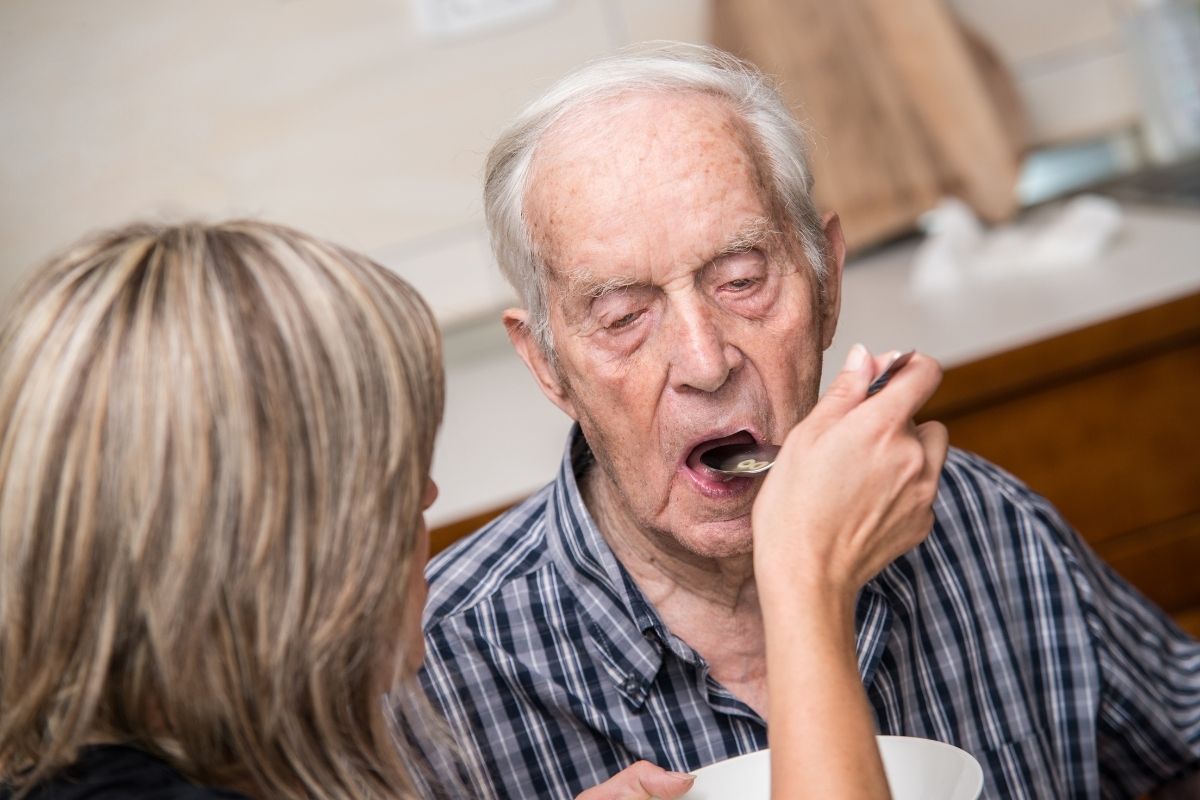“She won’t eat for me.”
Hospice clinicians often hear this from families with a loved one transitioning to end of life who is no longer interested in eating or drinking. It can be very distressing to witness someone you love losing weight and refusing food and water because giving food to someone is a primary way to comfort and care for them.
Helping families understand that a decrease or loss of appetite is a natural part of the dying process is a key part of the hospice education provided by HopeHealth. While this information may make sense on a rational level, people often have a difficult time accepting it emotionally, says HopeHealth Medical Director Christine Nevins-Herbert MD.
“It’s one thing to wrap your head around it and understand it logically,” she says. “It’s another thing to wrap your heart around it and say, ‘OK, I won’t continue to feed or give water to my loved one.’”
Family members may feel a strong obligation to do all they can to keep a loved one who is dying nourished and hydrated. Their situation can be especially challenging when a loved one is no longer able to make decisions for themselves and never made their wishes clear in an advance directive.
Sometimes family members want to explore the use of a feeding tube. When someone is unable to chew or swallow on their own, a feeding tube surgically inserted into their stomach can provide the nutrition they need to survive.

Why tube feeding can do more harm than good
Tube feeding was developed to be a temporary fix to help patients during recovery from surgery or until a medical problem preventing normal eating and drinking resolves. But tube feeding makes less sense for patients nearing the end of life. Families often don’t have an understanding of the complications involved.
And there are many complications to consider, especially when a loved one who is dying has advanced dementia.
A body of research has consistently shown that feeding tube use does not extend life for patients with advanced dementia. Nor does it prevent aspiration pneumonia, which can happen when a patient is too weak to swallow properly and can’t cough up food or liquid that enters their windpipe and gets into their lungs. There is also the risk that an agitated patient may try to remove their feeding tube, necessitating the need for physical restraints or sedatives.
As the body nears end of life and slows down digestion and kidney function, food and fluids they take in can build up. Excess fluid in the skin causes swelling. When fluid collects around the lungs, it causes congestion and increased difficulty breathing. Fluid that accumulates in spaces within the abdomen can cause pain, swelling, nausea and vomiting.
“It’s one thing to wrap your head around it and understand it logically. It’s another thing to wrap your heart around it and say, ‘OK, I won’t continue to feed or give water to my loved one.’”
Tube feeding can also lead to a problem with pressure ulcers, also known as bedsores, because fluid overload makes the skin prone to breakdown and less likely to heal. When someone is lying flat in bed, the most common area of the body affected by skin injury is the sacrum. Wet skin resulting from incontinence can also contribute to pressure ulcers.
Most physicians consider the surgery to have a feeding tube put in place relatively simple. But families need to consider whether their loved one is strong enough to have surgery, tolerate anesthesia and face the potential risk of infection, says HopeHealth Clinical Educator Lisa Wasson, RN.
“Usually with advanced dementia, there is a real risk of them not even tolerating the surgery,” Lisa says.
A feeding tube would not be placed once a patient is already receiving hospice care, although a patient who had one placed before enrolling on hospice may continue receiving artificial nutrition and hydration this way if appropriate.
A better option at end of life
Comfort feeding — assisting someone to continue to eat by mouth — offers a solution that avoids some of the significant risks associated with tube feeding.
“You feed the patient and allow them to take whatever they want to take,” Lisa says. “It might only be one bite or a bowl of soup or ice cream or whatever it is that they love to eat. Take what you want. Don’t have any if you don’t want it. That’s what comfort feeding is. We don’t push them to eat more when we comfort feed.”
For patients who appear thirsty but are having trouble swallowing, Lisa recommends the use of oral care sponge swabs dipped in a favorite beverage for them to suck on, such as coffee, fruit juice or ginger ale. The patient can only absorb a small amount of liquid, which avoids the risk of choking.
“I tell them to put it in whatever they want to,” Lisa says. “Did Mom have a special drink every night after dinner when she settled before bed? Go ahead. You let them have what they want. If she doesn’t want it, she’s not going to open her mouth for you.”
Comfort feeding encourages interaction and bonding with a loved one when time matters most. After all, food brings people together. For families, it is a way to honor their loved one and a last gesture, one to be savored as much as a scoop of ice cream or a delicious spoonful of homemade soup being offered.

